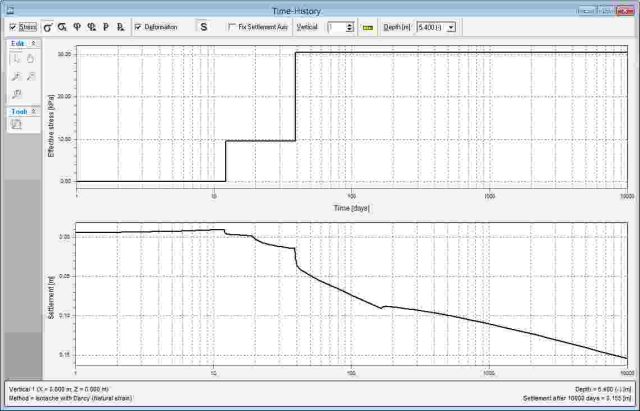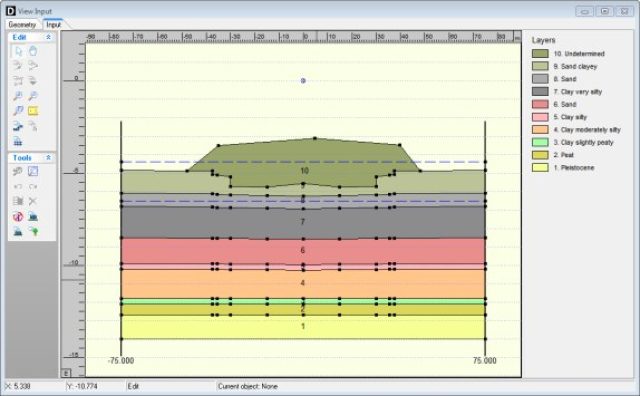D-Settlement
D-Settlement, previously known as MSettle, supplies all necessary means for embankment design and soil settlement prediction.
Peat and clay layers will compress significantly after embankment construction, site preparation or other loading. A final magnitude of several metres is not unusual in The Netherlands. Natural settlements take many years to develop, due to slow pore water dissipation and creep. Vertical drains are therefore often applied to speed up the consolidation process. Temporary preloading and enforced dewatering are also applied to reduce the residual creep after the construction period. Uncertainty and spatial variation will cause the actual measurements to deviate from the initial prediction within bounds. Under these complex circumstances, D-Settlement supplies all necessary means for embankment design and soil settlement prediction.
What does D-Settlement offer?
D-Settlement offers accurate and robust models, capturing consolidation, creep, submerging, drains, staged loading, and unloading and reloading. D-Settlement quickly predicts the transient settlement and its bandwidth during the design stage. Reliability is guaranteed by well-established solution methods, thorough validation, high-level expertise of the developer and a large user-base.
Some specific features in D-Settlement are:
- Design: Automatic determination of the extra soil volume required for settlement compensation.
- Vertical drains: Input of strip drains, columns and sand walls, based on real project parameters and layout. Practical options for enforced dewatering. Automatic conversion to model parameters.
- Consolidation period: Easy determination of the consolidation period for different vertical drain configurations.
- Safety: Determination of the minimum period required for safe and stable construction, with the aid of coupled D-Geo Stability .

- Settlement stress: Output of settlement, stress components and water head components along verticals and along time, as a result from staged construction and other types of loading (2D/3D).
- Temporary preloading and dewatering: Analysis of the effect of temporary preloading and/or enforced dewatering on settlements and pore pressures.
- Bandwidth: Output of total bandwidth and residual settlements.
- Fit for settlement plate: Settlement plate fit (automatic or manual), affecting settlements and bandwidth.
- Horizontal deformation: Output of approximate horizontal deformation along verticals.
D-Settlement can import soil parameters from a central project database and also share its (deformed) geometry with other Deltares programs and directly generate input for the D-Geo Stability program, including excess pore pressures and deformed geometry.

D-Settlement comes as a standard module, which can be extended further with other modules to fit more advanced applications.
How can I obtain D-Settlement?
Service Packages
The latest fully validated release can be downloaded via our Download Portal. This version is available if you have purchased a Service package. You can order a Service package via our Software sales Service team (software@deltares.nl). You don’t need a license file to do this. You can use the software in Demo mode without a license file. By purchasing a Service package you will receive a license file to unlock full functionality (according to purchased package). Our Software sales Service team will provide you with instructions on how to get the software working with a license file.
D-Settlement is available in the following packages:
Full package
- 1D Geometry
- 2D Geometry
- Darcy
- Vertical Drains
- Fit for Settlement Plate
- Reliability Analyses
- Horizontal Deformations
Educational package
The Educational package is the same as the Full package, but available at a reduced price.
Online Software
You can also use our Geotechnical software products via the internet (Software as a Service – SaaS), on subscription basis. For more information, please see Online Geotechnical Software.
Price list
See the price list 2025.
